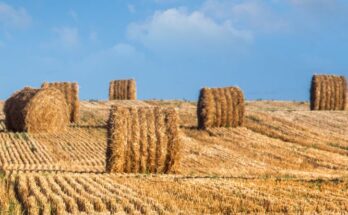Millets are an integral part of the basic diet for a majority of the population in India. However, their consumption and production grew less in the past few decades. We now are realising the importance of millets in fulfilling nutritional requirements and in fighting many diseases. The government of India has taken a big step in acknowledging the significance of millets for nutritional and food security as well as for boosting rural incomes. It has branded millets as ‘shree anna’—giving it the stature of mother of all grains.
The ‘shree anna’ millets have the potential to ensure stable incomes for poor farmers, especially, in the wake of extreme weather conditions. Millets need less water and labour. They are climate-resilient and thrive in dry regions and conditions of low soil fertility and moisture. In the wake of many countries witnessing erratic rainfall patterns, high temperatures, and prolonged droughts, translating into farm loss and lower and inferior quality cereal crop output, millets appear to be the sustainable solution to the severity of the climate crisis.
The ‘shree anna’ have all the rich nutrients that may be lacking in the other foods we eat these days. Millets can bring prosperity to farmers as well as people. Ragi, Bajra, Porso Millets, Kodo, Jowar, Foxtail Millets, Little Millets, and Browntop are top millet varieties that are rich sources of macronutrients and micronutrients. They have higher amounts of iron, zinc, calcium, potassium, protein and essential amino acids. And they are beneficial in checking high blood sugar levels in persons with type-2 diabetes and maintaining blood pressure and cholesterol levels and thus reducing the possibility of cardiovascular diseases.
You may also like to read: Study shows regular millet consumption can combat anemia
Millets are grown in over 93 countries, mostly poor and lower-income countries. Over, 97 per cent of production and consumption occurs in the semi-arid tropics of Asia and Africa. And India is the biggest producer of millets—26.6 per cent of the total global and 83 per cent of Asia’s output. A few decades ago, millets were widely consumed in different parts of India. However, the post-green revolution, with changing socio-economic demographics, influenced a change in eating habits and led to a sharp decline in per capita consumption of millets. It plummeted from 32.9 kg in 1962 to 4.2 kg in 2010. Another reason was the diminishing lucrativeness of undertaking the production of millets against wheat and rice.
The government of India is taking several efforts to urge farmers to produce millets and to promote its consumption in urban areas. In order to popularise millets, they were rebranded as nutri-cereals and the year 2018 was declared the National Year of Millets. On India’s proposal, the United Nations announced the year 2023 to be the “International Year of Millets”. And these efforts seem to be bearing fruits now. In 2022-23, we are likely to see the millets production of 20.5 million tonnes – a significant increase from 14.52 million tonnes in 2015-16.
You may also like to read: Millets can lower risk of type-2 diabetes and help manage blood glucose levels, reveals Study
American businessman and philanthropist Bill Gates has been a big part of the global efforts to end malnutrition. This development shows the global attention millets are going to get in the coming years. This also underlines the government of India’s commitment to promoting “superfood” millets across the globe. As the importance of millets reaches more and more people, there will be an increase in demand in the international market. This will put Indian farmers at advantage. The year of the millets also coincides with India’s presidentship of G20 and provides an opportunity to showcase the potential of millets to the visiting delegates.
The government is trying to mainstream millets for better nutritional outcomes as they have been added to PM POSHAN scheme. Millet exports are increasing constantly, and the upward trend remained unaffected even during the Covid pandemic. A rise in domestic consumption and international demand would urge Indian farmers to go for expansion in millets cultivation. There seem to be good days for millets ahead thanks to the strong focus by the government. It has declared the ICAR-Indian Institute of Millets Research (IIMR) as a centre for excellence and prepared a comprehensive strategy to boost exports.
There is a huge scope for export since India sells just one per cent of its total millets’ production in the international market. While the outlook for millets’ exports looks quite optimistic, the plans to promote value-added products of millets are going to add to the overall exports of nutri-cereals significantly. The popularisation of millets is going to increase the incomes of small-landholding farmers in India. And its consumption would help people fulfil their nutritional requirements. In a true sense, millets are going to be ‘shree anna’.
(Mallika Verma is the Director-Government Affairs at Federation of Seed Industry of India. Views expressed in the article are author’s own.)





